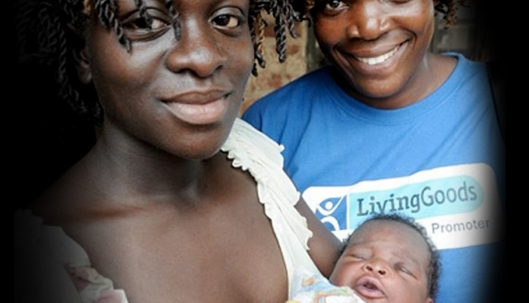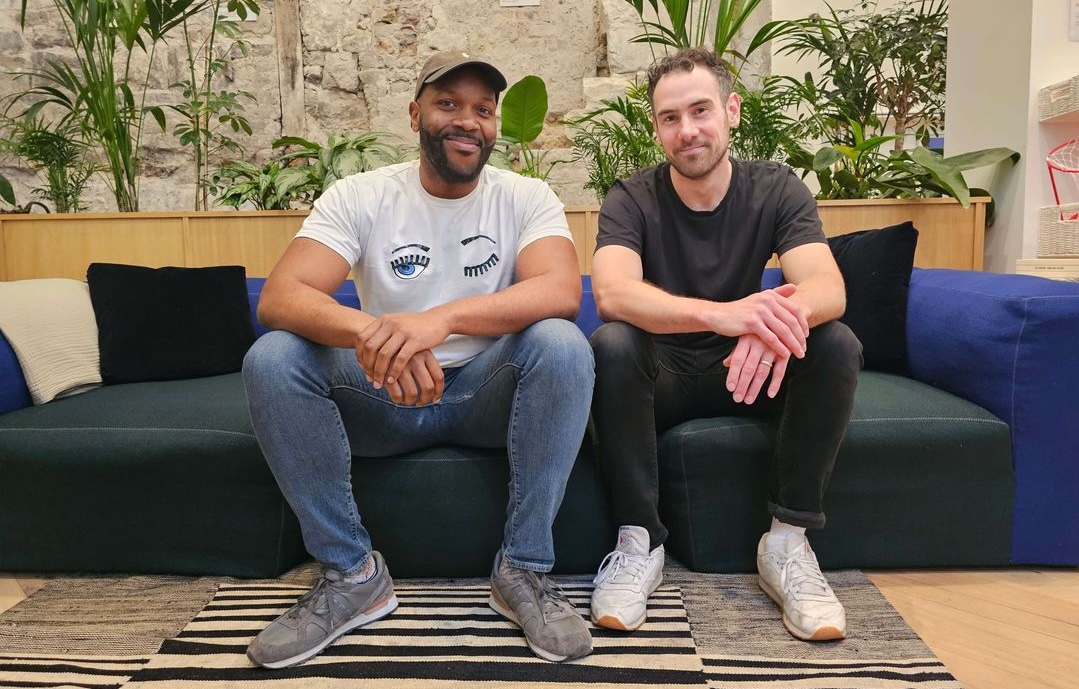Living Goods is a global health strategy wrapped in a retail distribution business wrapped in a nonprofit company.
In Uganda and, since last year, in Kenya, more than 1,000 Living Goods “community health promoters” in bright blue T-shirts make their rounds through urban slums and rural neighborhoods, peddling an assortment of malaria medicine, fortified cereals, vitamins and soap and larger items such as cookstoves, solar lanterns and bednets.
The community health promoters are trained to know which women are pregnant, which children are sick and who needs extra nutrition. They encourage breast-feeding, vaccinations and prompt treatment of common afflictions such as diarrhea and make referrals to clinics.
Product sales generate income for the agents, helping overcome the high turnover that has plagued volunteer community health worker initiatives and fickle funding that has undermined government efforts. If such micro-entrepreneurs can deliver on well-established public health interventions, the global impact could be profound: a study by the Johns Hopkins School of Public Health found that expanding community health worker programs could save more than 3.6 million lives each year.
Living Goods’ specific goal is a 15 percent reduction in deaths of children under five. A randomized trial conducted by the Jameel Poverty Action Lab at MIT that will be published this year.
They’ve taken the highly successful Avon model and applied it to pro-poor products in the developing world.Amy Klement, Omidyar Network
Living Goods is the brainchild of Chuck Slaughter, who built the mail-order business TravelSmith before selling to Barry Diller’s IAC/InterActiveCorp in 2004. Slaughter had volunteered to help run a nonprofit storefront drugstore franchise in Kenya. He saw that existing distribution channels in the developing world exact a penalty on the poor in the form of high prices, poor service or nonexistent stock.
Slaughter set out to build a sustainable distribution channel for “pro-poor” products, based on Avon lady-style door-to-door sales. (Slaughter did a stint as an Avon rep himself and has adopted many of the company’s techniques.)
Worldwide, the four billion people at the “base of the pyramid” represents a $5 trillion consumer market. In Africa, the 486 million people with less than $3,000 per year represent 70 percent of all local purchases.
Living Goods set out to treat customers as valued clients, not impoverished victims. Most Living Goods’ customers in Uganda live on 5,000 to 7,500 Ugandan shillings — two to three dollars — a day. Such customers can afford small items like soap, salt, zinc, a dose of anti-malarial medication; for cookstoves or solar lanterns, they need financing or have to save.
Living Goods sets prices 20 to 40 percent below often understocked local retailers, as confirmed by monthly price checks. The presence of competition can have beneficial effects. Researchers at Harvard’s Kennedy School of Government reported in 2013 that in regions with Living Goods distributors, the price of malaria medicine in local shops dropped by nearly 20 percent and and incidence of counterfeit drugs fell by half.
Cleaner cookstoves have been Living Goods top product, accounting for more than half of Living Goods’ gross profit margin last year and allowing Living Goods to subsidise prices of some essential goods. The stoves save buyers money as well, doubling the life of a bag of charcoal fuel and effectively paying for themselves in a month.
Living Goods is getting closer to a self-sustaining model. Most community health promoters appear to be successful enough to restock their supplies and repay their initial loans. Living Goods’ branch warehouses broke even last year, though revenues were not enough to cover country staff in Kampala and Nairobi, nor its San Francisco headquarters.
Now, Living Goods is working to boost its profit margins to about 30 percent, from below 20 percent now, by introducing private-label products, such as vitamin-fortified porridge, using mobile and other technology tools and adding more agents. When country-level operations achieve full sustainability, Living Goods plans to spin them off as for-profit operations.
That effectively makes Living Goods a nonprofit incubator of for-profit distribution models. The company raises $3 million to $4 million in grants from funders such as the Omidyar Network, Barr Foundation, Pershing Square and Mulago Foundation. The philanthropy effectively serves as risk capital to prove out the business model, at which point grants can be replaced by debt and equity financing, perhaps from some of the same backers.
“One of the things we love about Living Goods is that they’re applying business rigor in the form of great product mix, promotions and incentives, supply chain management,” says Amy Klement of the Omidyar Network. “They’ve taken the highly successful Avon model and applied it to pro-poor products in the developing world.”
Impacts
Financial
Living Goods reached break-even at the branch warehouse level in Uganda last year.
Social
Living Goods agents treated 62,000 children, supported 25,000 pregnancies, sold 37,000 units of vitamin-fortified foods and distributed 30,000 clean cookstoves.
One of a series of impact profiles produced in conjunction with the Case Foundation’s new publication, “A Short Guide to Impact Investing.”












